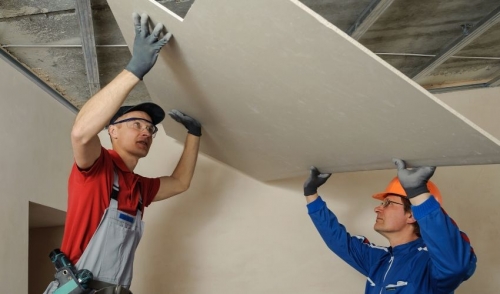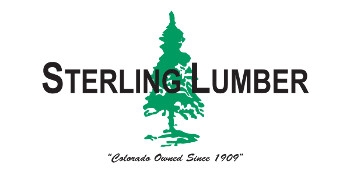
Guide to Drywall
Drywall is an amazingly versatile material, from simple walls to elaborate ornamentation. The more you know about drywall, the better you can appreciate its uses and make the most of drywall in all your projects and renovations.
About Drywall
First invented in the late 1880s, drywall has evolved over the decades to be a widespread building material particularly popular for the interior construction of walls and ceilings. Also known as plasterboard, sheet rock, wallboard, buster board, custard board, and other names, the product is the same – thick sheets or panels of gypsum between front and backing layers. Different additives are often incorporated into drywall to reduce mildew and water absorption, as well as to lower flammability, and new compositions are always being tested for different applications. Drywall is faster, easier, and more economical to use than plaster, and today it is important to have a good knowledge of drywall in any construction trade or for do-it-yourself home projects and repairs.
Using Drywall
Drywall is most well known as the structure for walls and ceilings, but its uses go far beyond those basics. Drywall can be bent into curves for arches, wraparounds, curved staircases, and artistic texturing. It is also often used to create inset niches, recessing, and built-in bookcases or integrated shelving. Drywall accents can create ceiling medallions, wall dimensions, and other dramatic elements for any one-of-a-kind project, and it is easy to get creative with all drywall has to offer.
Drywall Materials and Tools
Drywall is easy to work with and you can effectively hang and finish drywall with basic tools. For more professional results or elaborate projects, however, it will be necessary to opt for quality mud and compounds, cutting tools, fasteners, tapes, adhesives, and other gear. Different tools can also make sanding, texturing, and finishing drywall easier, with more consistent results. The exact tools and materials you will need for a drywall project will depend on your level of expertise, the overall goals for the project, and what type of use the finished drywall project will see, as well as the conditions of the project site and what other materials are part of the overall design.
Drywall Techniques
Working with drywall is a versatile skill, but to make the most of what drywall can offer, you need to master more techniques than just hanging sheets or panels on a straight, flat surface. Different techniques to learn with drywall include:
- Estimating: Maximize your supplies and minimize your budget by learning how to estimate drywall accurately. This will help you avoid excess waste and increased costs.
- Framing: Framing doors, walls, ceilings, shelves, and other features can help you use drywall in a greater range of projects for more consistent, integrated results.
- Finishing: Finishing drywall ranges from taping, mudding, and painting to sealing and texturing surfaces. There can be different techniques for each step, depending on the overall project.
- Bending: Create curves and drama with drywall when you learn how to bend it to different angles for smooth, seamless arches and other shapes.
- Access Panels: Adding access panels to drywall can help you easily create convenient ways to get to wiring, pipe joints, drains, and other interior wall fixtures without demolition.
- Repairs: There are different ways to repair drywall depending on the cause and extent of the damage. Knowing these repair techniques and how to fix different errors can lead to significant project savings and less time needed for repair jobs.
As you move to more advanced drywall techniques, you can try your own methods and discover what works best for different projects and conditions. This experience and expertise will be invaluable as you find more ways to use drywall effectively and beautifully.
Learn More About Drywall
There are many ways to expand your knowledge of drywall and how to work with it. Look for training classes from contractors or employers, as well as both short and long-term classes for different techniques. Books and videos are also available to help you learn more about drywall, no matter what type of project you have in mind, what your starting skill set may be, or how you envision the final results. The more you learn, the more enthusiastic you will be to discover more about drywall, and the more ways you’ll find to make the most of every piece, panel, and project.
